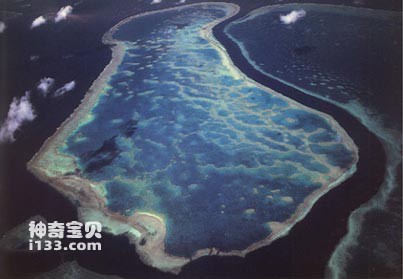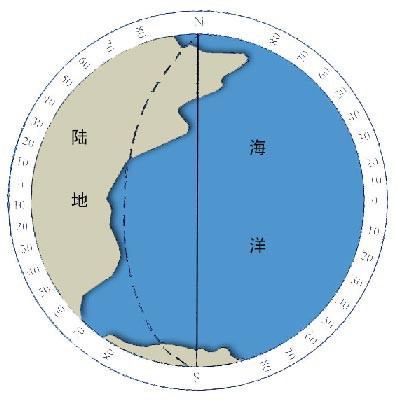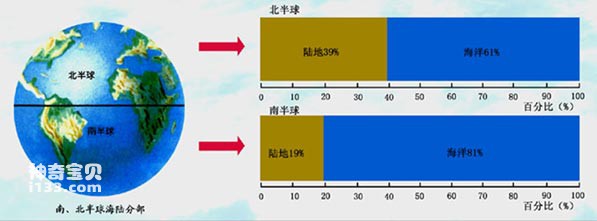On the earth we live on, there are continents and oceans. And the ocean is much larger than the land. According to calculations by scientists,the Earth’s surface area is 510 million square kilometers, of which the ocean occupies 70.8%, or 361 million square kilometers. The remaining 149 million square kilometers is land, and its area is only 29.2% of the Earth’s surface area. %. In other words, less than one-third of the earth’s land mass. Therefore, the earth that astronauts see from space is a blue "water ball", and the vast continent where we humans live is actually just a few "islands" dotted in a vast ocean. It is not unreasonable for some people to suggest that the earth be changed into a "water ball".

Global sea and land distribution map

Seeing the land and sea from the air

Schematic diagram of the distribution of land and sea with latitude
You can use the "Southern and Northern Hemisphere Sea and Land Distribution Map" to further explain the distribution of sea and land on the earth. The figure gives the percentage distribution of ocean and land area with latitude. As can be seen from the figure, except for the Antarctic region between 45 degrees and 70 degrees north latitude and 70 degrees south latitude, where the land area is larger than the ocean area, the ocean area is larger than the land area at most other latitudes, and between 56 degrees south latitude and 65 degrees, almost no land, completely surrounded by sea water. This uneven distribution with latitude is a characteristic of the distribution of Shanghai and mainland on the earth. Another feature is the symmetry of the distribution of sea and land. For example, the Antarctic is land and the North Pole is sea; the high altitude areas of the Northern Hemisphere are where continents are concentrated, while the high latitudes of the Southern Hemisphere are where three oceans are connected.
These characteristics of the distribution of oceans and land on the earth have a great impact on the movement of sea water.

Distribution map of land and sea in southern and northern hemispheres
animal tags:
We created this article in conjunction with AI technology, then made sure it was fact-checked and edited by a Animals Top editor.